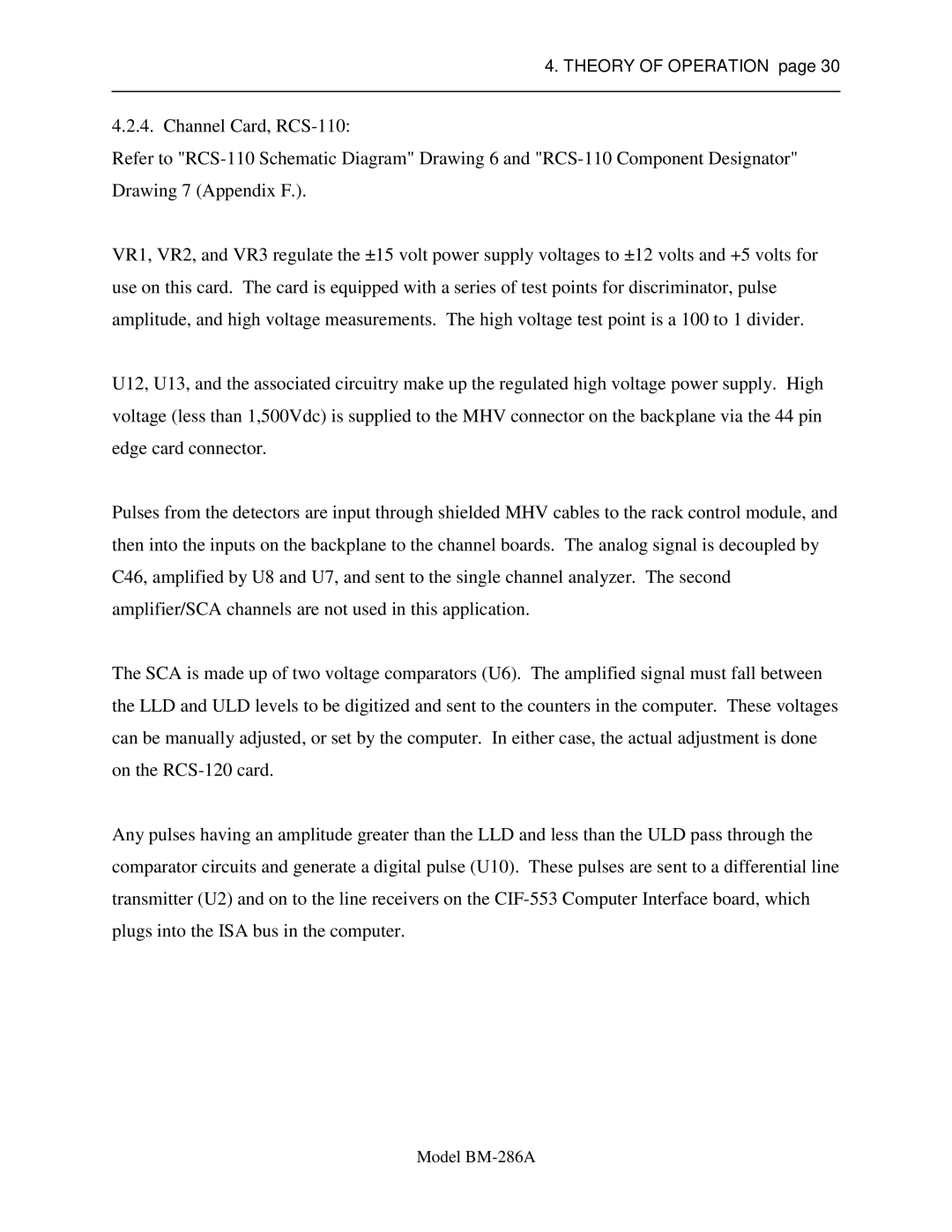4. THEORY OF OPERATION page 30
4.2.4. Channel Card,
Refer to
VR1, VR2, and VR3 regulate the ±15 volt power supply voltages to ±12 volts and +5 volts for use on this card. The card is equipped with a series of test points for discriminator, pulse amplitude, and high voltage measurements. The high voltage test point is a 100 to 1 divider.
U12, U13, and the associated circuitry make up the regulated high voltage power supply. High voltage (less than 1,500Vdc) is supplied to the MHV connector on the backplane via the 44 pin edge card connector.
Pulses from the detectors are input through shielded MHV cables to the rack control module, and then into the inputs on the backplane to the channel boards. The analog signal is decoupled by C46, amplified by U8 and U7, and sent to the single channel analyzer. The second amplifier/SCA channels are not used in this application.
The SCA is made up of two voltage comparators (U6). The amplified signal must fall between the LLD and ULD levels to be digitized and sent to the counters in the computer. These voltages can be manually adjusted, or set by the computer. In either case, the actual adjustment is done on the
Any pulses having an amplitude greater than the LLD and less than the ULD pass through the comparator circuits and generate a digital pulse (U10). These pulses are sent to a differential line transmitter (U2) and on to the line receivers on the
Model
